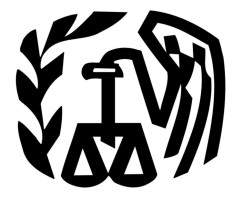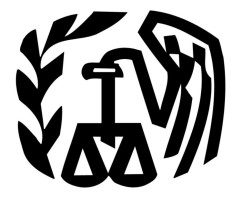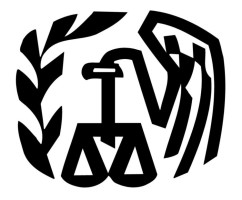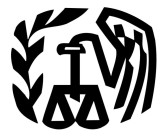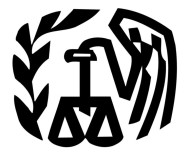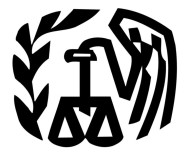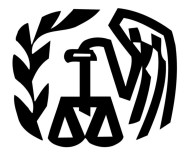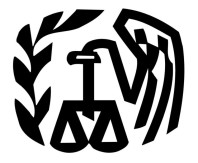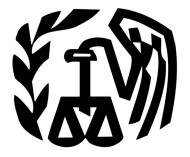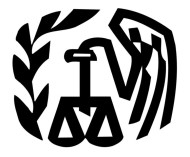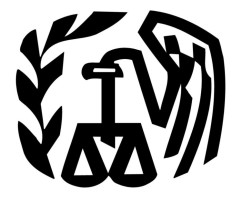1099-K reporting threshold delayed for third party platform payments
The IRS delayed the new $600 Form 1099-K reporting threshold requirement for third party payment organizations for tax year 2023. For 2023 and prior years, payment apps and online marketplaces are required to send out Forms 1099-K only to taxpayers who receive over $20,000 and have over 200 transactions. For tax year 2024, the IRS plans for a threshold of $5,000 to phase in the new reporting requirements.
IRS expands work on aggressive Employee Retention Credit claims; 20,000 disallowance letters being mailed, more action and voluntary disclosure program coming
WASHINGTON — As part of continuing efforts to combat dubious Employee Retention Credit (ERC) claims, the Internal Revenue Service is sending an initial round of more than 20,000 letters to taxpayers notifying them of disallowed ERC claims. IRS is disallowing claims to entities that did not exist or did not have paid employees during the period of eligibility to prevent improper ERC payments from being made to ineligible entities.
The letters are being sent as the IRS continues increased scrutiny of ERC claims in response to misleading marketing campaigns that have targeted small businesses and other organizations. The IRS mailing is the latest in an expanded compliance effort that includes a special withdrawal program for those with pending claims who realize they may have filed an inaccurate tax return. Later this month, a separate voluntary disclosure program will be unveiled allowing those who received questionable payments to come in and avoid future IRS action.
After an initial review this fall, the IRS determined that a large block of taxpayers did not meet basic criteria for the credit. Starting this week, taxpayers who are ineligible for the credit will begin receiving copies of Letter 105 C, Claim Disallowed.
This group of letters will cover taxpayers ineligible for the ERC either because their entity did not exist or did not have employees for the time period when the credit was claimed.
“With the aggressive marketing we saw with this credit, it’s not surprising that we’re seeing claims that clearly fall outside of the legal requirements,” said IRS Commissioner Danny Werfel. “The action we are taking today is part of an initial set of steps in our compliance work in this area, and more letters will be going out in the near future, including both disallowance letters and letters seeking the return of funds erroneously claimed and received.”
“As we continue our audit and criminal investigation work involving the Employee Retention Credits, we continue to urge people who submitted a claim to review the rules with a trusted tax professional. If they filed an inaccurate claim, we urge them to consider withdrawing their pending claim or use the upcoming disclosure program to repay improper refunds to avoid future action.”
Following concerns about aggressive ERC marketing from tax professionals and others, the IRS announced Sept. 14 a moratorium on processing new ERC claims through at least the end of 2023. The IRS noted that enhanced compliance reviews of existing claims submitted before the moratorium is critical to protect against fraud and also to protect businesses and organizations from facing penalties or interest payments stemming from bad claims pushed by promoters.
When properly claimed, the ERC is a refundable tax credit designed for businesses that continued paying employees during the COVID-19 pandemic while their business operations were either fully or partially suspended due to a government order or had a significant decline in gross receipts during the eligibility periods.
In July, the IRS said it was shifting its focus to review ERC claims for compliance concerns, including intensifying audit work and criminal investigations on promoters and businesses filing dubious claims. The IRS has hundreds of criminal cases being worked, and thousands of ERC claims have been referred for audit.
20,000 letters focus on two ERC problem areas
The mailing reflects just part of the ongoing IRS review of these claims. In this group, two categories of claims have been identified and are being disallowed:
- Entity not in existence during period of eligibility: The ERC applies to qualified wages for periods between March 13, 2020, and Dec. 31, 2021. Entities established after Dec. 31, 2021, are not entitled to the ERC under the law passed by Congress.
- There are no paid employees during the period of eligibility: The ERC is intended as a credit against qualified wages paid. Entities that did not pay any wages are not eligible for ERC.
The IRS respects taxpayer rights, and the disallowance letter will explain that a taxpayer that disagrees with the disallowance can respond with documentation that supports their eligibility or claim amount, or they can file an administrative appeal.
The disallowance letters that identify ineligible claims before they’re paid serve several purposes that help taxpayers and tax administration. They:
- Help ineligible taxpayers avoid audits, repayment, penalties and interest,
- Protect taxpayers by preventing an incorrect refund from going to an ERC promoter, and
- Save IRS resources by disallowing incorrect credits before they enter the audit process.
The IRS plans additional letters beyond the disallowance letters. Plans are also being finalized for a special voluntary disclosure program involving ERC claims that will be announced later this month.
The IRS is also continuing to review ERC claims and may request more information from taxpayers to support their ERC claim.
IRS reminder: Still time to withdraw pending ERC claims
The IRS is also continuing to accept and process requests to withdraw a taxpayer's full ERC claim under the special withdrawal process. Taxpayers have until at least the end of the year to request a withdrawal.
This withdrawal option allows certain employers that filed an ERC claim but have not yet received a refund to withdraw their submission and avoid future repayment, interest and penalties. Employers that submitted an ERC claim that has not yet been paid can withdraw their claim and avoid the possibility of getting a refund for which they're ineligible. They can also withdraw their claim if they’ve received a check but have not yet deposited or cashed it.
The IRS created the withdrawal option to help small business owners and others who were pressured or misled by ERC marketers or promoters into filing ineligible claims. Claims that are withdrawn will be treated as if they were never filed. The IRS will not impose penalties or interest.
During this period, the IRS warns taxpayers to use extreme caution before applying for the ERC as aggressive maneuvers continue by marketers and scammers. In addition, the IRS continues to urge taxpayers who submitted claims to review the ERC requirements and talk to a trusted tax professional about their eligibility amid misleading marketing around the credit.
For more information on ERC eligibility, see the ERC frequently asked questions and the ERC Eligibility Checklist, which is available as an interactive tool or as a printable guide.
Tax season rapidly approaching: Get ready now to file 2023 federal income tax returns in early 2024
WASHINGTON — With the nation’s tax season rapidly approaching, the Internal Revenue Service reminds taxpayers there are important steps they can take now to help “get ready” to file their 2023 federal tax return.
This is the first in a series of special IRS “Get Ready” reminders to help taxpayers prepare for the upcoming tax filing season in early 2024. A little advance work now can help people have the paperwork and information ready to file their tax returns quickly and accurately. As part of this education effort, the IRS has a special page outlining items taxpayers can look into now to get ready to file their 2023 tax returns.
Get helpful information to file through IRS Online Account
Taxpayers can create or access their Online Account at IRS.gov/account. New users should have their photo identification ready.
With an Online Account taxpayers can access a variety of helpful information to help them during the 2024 filing season, including:
- View key data from the most recently filed tax return, including adjusted gross income.
- Get account transcripts.
- Sign power of attorney and tax information authorizations.
- Receive notices electronically.
- Get email notifications for new account information or activity.
- Make and view payments.
- View, create or change payment plans.
- See the amount owed by year.
Gather, organize and update tax records
Organizing tax records makes it easier to prepare a complete and accurate tax return. It helps avoid errors that can slow down refunds and may also help find overlooked deductions or tax credits.
Most income is taxable, including unemployment compensation, refund interest and income from the gig economy and digital assets. Taxpayers should gather Forms W-2, Wage and Tax Statement, Forms 1099-MISC, Miscellaneous Income, and other income documents before filing their return.
Don’t forget to notify the IRS of an address change and be sure to notify the Social Security Administration of any legal name changes as soon as possible.
Be sure paychecks have enough tax withheld; time running out to make 2023 changes
The Tax Withholding Estimator is a tool on IRS.gov that can help taxpayers determine the right amount of tax to have withheld
from their paychecks. This tool can be helpful if an earlier tax return resulted in tax owed or a large refund. And for those that have life changes or events such as getting married or divorced or welcoming a child, or for those taking on a second job or managing self-employment income, it can help calculate
estimated tax payments. To change federal tax withholding, taxpayers will need to update their withholding with their employer, either online or by submitting a new Form W-4, Employee's Withholding Allowance Certificate.
But to make adjustments in time to affect 2023 tax withholding, taxpayers need to act quickly. Only a few pay periods remain in the year, and payroll systems need time to make withholding changes.
Speed refunds with direct deposit
Direct deposit is the fastest and safest way to get a tax refund. Taxpayers can make direct deposits to bank accounts, banking apps and reloadable debit cards, but will need to provide the routing
and account information associated with the account. If the routing and account number cannot be located, taxpayers should contact their bank, financial institution or app provider.
Taxpayers requesting a paper check are much more likely to report an issue getting their refund because of non-receipt, forgery, theft or checks returned for a bad address, compared to taxpayers using direct deposit.
Employee Retention Credit
Dirty Dozen: IRS urges tax pros and other businesses to beware of spearphishing; offers tips to avoid dangerous common scams
WASHINGTON – The Internal Revenue Service today warned tax professionals and businesses that they remain a top target for identity thieves and face threats from common scams on this year’s Dirty Dozen list.
As part of the annual Dirty Dozen tax scams effort, the IRS and the Security Summit partners urged tax professionals and businesses to be on the lookout for a variety of suspicious email requests. Through these spearphishing emails, scammers try to steal client data, tax software preparation credentials and tax preparer identities with the goal of getting fraudulent tax refunds. These requests can range from an email that looks like it’s from a potential new client to a request targeting payroll and human resource departments asking for sensitive Form W-2 information.
“It’s vitally important for tax professionals and businesses to maintain a strong defense against cyberattacks like spearphishing,” said IRS Commissioner Danny Werfel. “The information these businesses have on their systems is extremely valuable to an identity thief looking to steal identities and file fraudulent tax returns. There are simple steps that tax pros and businesses can take to avoid being fooled by these common schemes, including extra caution when opening emails, clicking on links or sharing sensitive client data. Extra care can go a long way to protect tax professionals and businesses as well as their clients.”
Working together as the Security Summit, the IRS, state tax agencies and the nation’s tax industry have taken numerous steps since 2015 to strengthen internal systems and controls to protects against tax-related identity theft. As part of this effort, the IRS and Summit partners continue to warn people about common scams and schemes during tax season and beyond that can threaten a taxpayer’s personal and financial information. The Security Summit initiative is committed to protecting taxpayers, businesses and the tax system from scammers and identity thieves, and the Dirty Dozen is part of the larger effort.
The IRS’ annual Dirty Dozen campaign is a list of 12 scams and schemes that put taxpayers and the tax professional community at risk of losing money, personal information, data and more. Some items on the Dirty Dozen are new and some make a return visit. While the Dirty Dozen is not a legal document or a formal listing of agency enforcement priorities, it is intended to alert taxpayers and the tax professional community about various scams and schemes.
Side-step spearphishing: Cyber security tips for tax pros and businesses
Phishing is a term given to emails or text messages designed to get users to provide personal information, either directly or by clicking on a link or attachment. Spearphishing is a tailored phishing
attempt to a specific organization or business.
The IRS is warning tax professionals about spearphishing because there is greater potential for harm if the tax preparer has a data breach. A successful spearphishing attack can ultimately steal client data and the tax preparer’s identity, allowing the thief to file fraudulent returns.
A taxpayer becoming a victim of tax-related identity theft is certainly an issue with spearphishing, but criminals seeking tax preparer credentials or access to their client’s tax-related information increases the potential number of victims.
Spearphishing begins with a suspicious email – one that may appear as a tax preparation application or another e-service or platform. Some scammers will even use the IRS logo and claim something like “Action Required: Your account has now been put on hold.” Often these emails stress urgency and will ask tax pros or businesses to click on links to input or verify information.
How to side-step spearphishing:
- Never click suspicious links.
- Double check the requests with the original sender.
- Be vigilant year-round, not just during filing season.
Client impersonation: Spearphishing aimed at tax pros
The IRS and its Security Summit partners continue to see spearphishing attempts that impersonate a new potential client, known as the "New Client" scam. If the tax preparer responds, the scammer sends a malicious attachment or URL that ultimately enables them to gain
access to sensitive client information on the tax preparer’s computer systems.
Bogus requests for W-2s: Spearphishing aimed at businesses
The IRS wants to warn businesses about another specific spearphishing scam that targets employees in payroll or accounting departments. These employees might get an email that looks like it comes
from an official source requesting W-2s for all employees. The payroll department might accidentally reply with these important documents, which would provide scammers with W-2 data on employees that
can be used to commit fraud.
The IRS recommends using a two-person review process when receiving these types of requests for W-2s. The IRS also recommends any requests for payroll be submitted through an official process, like the employer’s Human Resources portal.
Make a difference: Report fraud, scams and schemes
Individuals should never respond to tax-related phishing or spearfishing or click on the URL link. Instead, the scams should be reported by sending the email or a copy of the text/SMS as an
attachment to phishing@irs.gov. The report should include the caller ID (email or phone
number), date, time and time zone, and the number that received the message.
Taxpayers can also report scams to the Treasury Inspector General for Tax Administration or the Internet Crime Compliant Center. The Report Phishing and Online Scams page at IRS.gov provides complete details. The Federal Communications Commission’s Smartphone Security Checker is a useful tool against mobile security threats.
As part of the Dirty Dozen awareness effort, the IRS encourages people to report individuals who promote improper and abusive tax schemes as well as tax return preparers who deliberately prepare improper returns.
To report an abusive tax scheme or a tax return preparer, people should mail or fax a completed Form 14242, Report Suspected Abusive Tax Promotions or Preparers and any supporting materials to the IRS Lead Development Center in the Office of Promoter Investigations.
Mail:
Internal Revenue Service Lead Development Center
Stop MS5040
24000 Avila Road
Laguna Niguel, CA 92677-3405
Fax: 877-477-9135
Alternatively, taxpayers and tax practitioners may send the information to the IRS Whistleblower Office for possible monetary reward.
For more information, see Abusive Tax Schemes and Abusive Tax Return Preparers.
Getting Ready for Tax Season 2023
Inside This IssueGet Ready now to file your 2022 federal income tax return WASHINGTON — The Internal Revenue Service today encouraged taxpayers to take simple steps before the end of the year to make filing their 2022 federal tax return easier. With a little advance preparation, a preview of tax changes and convenient online tools, taxpayers can approach the upcoming tax season with confidence. Filers can visit the Get Ready webpage at IRS.gov/getready to find guidance on what’s new and what to consider when filing a 2022 tax return. They can also find helpful information on organizing tax records and a list of online tools and resources. Get Ready by gathering tax records The IRS encourages taxpayers to develop an electronic or paper recordkeeping system to store tax-related information in one place for easy access. Taxpayers should keep copies of filed tax returns and their supporting documents for at least three years. Before January, taxpayers should confirm that their employer, bank and other payers have their current mailing address and email address to ensure they receive their year-end financial statements. Typically, year-end forms start arriving by mail or are available online in mid-to-late January. Taxpayers should carefully review each income statement for accuracy and contact the issuer to correct information that needs to be updated. Get Ready for what’s new for Tax Year 2022 As taxpayers gather tax records, they should remember that most income is taxable. This includes unemployment income, refund interest and income from the gig economy and digital assets. Taxpayers should report the income they earned, including from part-time work, side jobs or the sale of goods. The American Rescue Plan Act of 2021 lowered the reporting threshold for third-party networks that process payments for those doing business. Prior to 2022, Form 1099-K was issued for third-party payment network transactions only if the total number of transactions exceeded 200 for the year and the aggregate amount of these transactions exceeded $20,000. Now a single transaction exceeding $600 can trigger a 1099-K. The lower information reporting threshold and the summary of income on Form 1099-K enables taxpayers to more easily track the amounts received. Remember, money received through third-party payment applications from friends and relatives as personal gifts or reimbursements for personal expenses is not taxable. Those who receive a 1099-K reflecting income they didn’t earn should call the issuer. The IRS cannot correct it. Credit amounts also change each year like the Child Tax Credit (CTC), Earned Income Tax Credit (EITC) and Dependent Care Credit. Taxpayers can use the Interactive Tax Assistant on IRS.gov to determine their eligibility for tax credits. Some taxpayers may qualify this year for the expanded eligibility for the Premium Tax Credit, while others may qualify for a Clean Vehicle Credit through the Inflation Reduction Act of 2022. Refunds may be smaller in 2023. Taxpayers will not receive an additional stimulus payment with a 2023 tax refund because there were no Economic Impact Payments for 2022. In addition, taxpayers who don’t itemize and take the standard deduction, won’t be able to deduct their charitable contributions. The IRS cautions taxpayers not to rely on receiving a 2022 federal tax refund by a certain date, especially when making major purchases or paying bills. Some returns may require additional review and may take longer. For example, the IRS and its partners in the tax industry, continue to strengthen security reviews to protect against identity theft. Additionally, refunds for people claiming the Earned Income Tax Credit (EITC) or the Additional Child Tax Credit (ACTC) can’t be issued before mid-February. The law requires the IRS to hold the entire refund – not just the portion associated with EITC or ACTC. This law helps ensure taxpayers receive the refund they're due by giving the IRS time to detect and prevent fraud. For taxpayers who are still waiting for confirmation that last year’s tax return processed, or for a tax year 2021 refund or stimulus payment to process, their patience is appreciated. As of Nov. 11, 2022, the IRS had 3.7 million unprocessed individual returns received this year. These include tax year 2021 returns and late filed prior year returns. Of these, 1.7 million returns require error correction or other special handling, and 2 million are paper returns waiting to be reviewed and processed. They also had 900,000 unprocessed Forms 1040-X for amended tax returns. The IRS is processing these amended returns in the order received and the current timeframe can be more than 20 weeks. Taxpayers should continue to check Where's My Amended Return? for the most up-to-date processing status available. Renew expiring tax ID numbers |
IRS advises that improperly forgiven Paycheck Protection Program loans are taxable
WASHINGTON – The Internal Revenue Service recently issued guidance addressing improper forgiveness of a Paycheck Protection Program loan (PPP loan).
The guidance confirms that, when a taxpayer’s loan is forgiven based upon misrepresentations or omissions, the taxpayer is not eligible to exclude the forgiveness from income and must include in income the portion of the loan proceeds that were forgiven based upon misrepresentations or omissions. Taxpayers who inappropriately received forgiveness of their PPP loans are encouraged to take steps to come into compliance by, for example, filing amended returns that include forgiven loan proceed amounts in income.
“This action underscores the Internal Revenue Service’s commitment to ensuring that all taxpayers are paying their fair share of taxes,” said IRS Commissioner Chuck Rettig. “We want to make sure that those who are abusing such programs are held accountable, and we will be considering all available treatment and penalty streams to address the abuses.”
Many PPP loan recipients who received loan forgiveness were qualified and used the loan proceeds properly to pay eligible expenses. However, the IRS has discovered that some recipients who received loan forgiveness did not meet one or more eligibility conditions. These recipients received forgiveness of their PPP loan through misrepresentation or omission and either did not qualify to receive a PPP loan or misused the loan proceeds.
The PPP loan program was established by the Coronavirus Aid, Relief and Economic Security Act (CARES Act) to assist small US businesses that were adversely affected by the COVID-19 pandemic in paying certain expenses. The PPP loan program was further extended by the Economic Aid to Hard-Hit Small Businesses, Nonprofits and Venues Act.
Under the terms of the PPP loan program, lenders can forgive the full amount of the loan if the loan recipient meets three conditions.
1 - The loan recipient was eligible to receive the PPP loan. An eligible loan recipient:
- is a small business concern, independent contractor, eligible self-employed individual, sole proprietor, business concern, or a certain type of tax-exempt entity;
- was in business on or before February 15, 2020; and
- had employees or independent contractors who were paid for their services, or was a self-employed individual, sole proprietor or independent contractor.
2 - The loan proceeds had to be used to pay eligible expenses, such as payroll costs, rent, interest on the business’ mortgage, and utilities.
3 - The loan recipient had to apply for loan forgiveness. The loan forgiveness application required a loan recipient to attest to eligibility, verify certain financial information, and meet other legal qualifications.
If the 3 conditions above are met, then under the PPP loan program the forgiven portion is excluded from income. If the conditions are not met, then the amount of the loan proceeds that were forgiven but do not meet the conditions must be included in income and any additional income tax must be paid.
Employers: beware of third parties promoting improper employee retention credit claims
Employers should be wary of third parties advising them to claim the employee retention credit when they may not qualify. Some third parties are taking improper positions related to taxpayer eligibility for and computation of the credit.
These third parties often charge large upfront fees or a fee that is contingent on the amount of the refund. They may also fail to inform taxpayers that wage deductions claimed on the business' federal income tax return must be reduced by the amount of the credit.
If the business filed an income tax return deducting qualified wages before it filed an employment tax return claiming the credit, the business should file an amended income tax return to correct any overstated wage deduction.
Businesses should be cautious of schemes and direct solicitations promising tax savings that are too good to be true. Taxpayers are always responsible for the information reported on their tax returns. Improperly claiming the ERC could result in taxpayers being required to repay the credit along with penalties and interest.
What is the employee retention credit?
The ERC is a refundable tax credit for businesses who continued paying employees while shutdown due to the COVID-19 pandemic or had significant declines in gross receipts from March 13, 2020 - December 31, 2021. Eligible taxpayers can claim the ERC on an original or amended employment tax return for a period within those dates.To be eligible for the ERC, employers must meet one the following conditions:
- They sustained a full or partial suspension of operations due to orders from an appropriate governmental authority limiting commerce, travel, or group meetings due to COVID-19 during 2020 or the first three quarters of 2021
- The business experienced a significant decline in gross receipts during 2020or a decline in gross receipts during the first three quarters of 2021
- The employer qualified as a recovery startup business for the third or fourth quarters of 2021.
Only recovery startup businesses are eligible for the employee retention credit in the fourth quarter of 2021.
Eligible employers cannot claim this credit on wages reported as payroll costs to get PPP loan forgiveness or that they used to claim certain other tax credits at any time.
To report tax-related illegal activities relating to ERC claims, taxpayer should submit Form 3949-A, Information Referral They should also report instances of fraud and IRS-related phishing attempts to the Treasury Inspector General for Tax Administration by calling 800-366-4484.
Here are some resources to help employers understand eligibility requirements and how to claim this valuable credit:
- For qualified wages paid after March 12, 2020, and before January 1, 2021 – Notice 2021-20, Notice 2021-49, and Revenue Procedure 2021-33
- For qualified wages paid after December 31, 2020, and before July 1, 2021 – Notice 2021-23, Notice 2021-49and Revenue Procedure 2021-33
- For qualified wages paid after June 30, 2021, and before October 1, 2021 – Notice 2021-49 and Revenue Procedure 2021-33
- For qualified wages paid after September 30, 2021, and before January 1, 2022 – Notice 2021-49 and Notice 2021-65
Here’s how businesses can deduct startup costs from their federal taxes
When starting a business, owners should treat all eligible costs incurred before beginning to operate the business as capital expenditures that are part of their basis in the business. Generally, the business can recover costs for assets through depreciation deductions.
For costs paid or incurred after September 8, 2008, the business can deduct a
limited amount of start-up and organizational costs. They can recover the costs they cannot deduct currently over a 180-month period. This recovery period starts with the month the business
begins to operate active trade or as a business.
Business start-up costs
Start-up costs are amounts the business paid or incurred for creating an
active trade or business, or investigating the creation or acquisition of an active trade or business. Start-up costs include amounts paid or incurred in connection with an existing activity
engaged in for profit, and to produce income in anticipation of the activity becoming an active trade or business.
Qualifying costs
A start-up cost is recoverable if it meets both of the following requirements:
- It’s a cost a business could deduct if they paid or incurred it to operate an existing active trade or business, in the same field as the one the business entered into.
- It’s a cost a business pays or incurs before the day their active trade or business begins.
Start-up costs include amounts paid for the following:
- An analysis or survey of potential markets, products, labor supply, transportation facilities, etc.
- Advertisements for the opening of the business.
- Salaries and wages for employees who are being trained and their instructors.
- Travel and other necessary costs for securing prospective distributors, suppliers, or customers.
- Salaries and fees for executives and consultants, or for similar professional services.
Nonqualifying costs
Start-up costs don't include deductible interest, taxes, or research and experimental costs.
Purchasing an active trade or business
Recoverable start-up costs for purchasing an active trade or business include only investigative costs incurred during a general search for or preliminary
investigation of the business. These are costs that help in deciding whether to purchase a business. Costs incurred to purchase a specific business are capital expenses that can't be
amortized.
What people should and should not do if they get mail from the IRS
Every year the IRS mails letters or notices to taxpayers for many different reasons. Typically, it’s about a specific issue with a taxpayer’s federal tax return or tax account. A notice may tell them about changes to their account or ask for more information. It could also tell them they need to make a payment. This year, people might have also received correspondence about Economic Impact Payments or an advance child tax credit outreach letter.
Here are some do's and don'ts for anyone who receives mail from the IRS:
- Don't ignore it. Most IRS letters and notices are about federal tax returns or tax accounts. Each notice deals with a specific issue and includes specific instructions on what to do
- Don’t throw it away. Taxpayers should keep notices or letters they receive from the IRS. These include adjustment notices when an action is taken on the taxpayer's account, Economic Impact Payment notices, and letters about advance payments of the 2021 child tax credit.They may need to refer to these when filing their 2021 tax return in 2022. In general, the IRS suggests that taxpayers keep records for three years from the date they filed the tax return.
- Don't panic. The IRS and its authorized private collection agencies do send letters by mail. Most of the time, all the taxpayer needs to do is read the letter carefully and take the appropriate action.
- Don't reply unless instructed to do so. There is usually no need for a taxpayer to reply to a notice unless specifically instructed to do so. On the other hand, taxpayers who owe should reply with a payment. IRS.gov has information about payment options.
- Do take timely action. A notice may reference changes to a taxpayer's account, taxes owed, a payment request or a specific issue on a tax return. Acting timely could minimize additional interest and penalty charges.
- Do review the information. If a letter is about a changed or corrected tax return, the taxpayer should review the information and compare it with the original return. If the taxpayer agrees, they should make notes about the corrections on their personal copy of the tax return and keep it for their records.
- Do respond to a disputed notice. If a taxpayer doesn't agree with the IRS, they should mail a letter explaining why they dispute the notice. They should mail it to the address on the contact stub included with the notice. The taxpayer should include information and documents for the IRS to review when considering the dispute.
- Do remember there is usually no need to call the IRS. If a taxpayer must contact the IRS by phone, they should use the number in the upper right-hand corner of the notice. The taxpayer should have a copy of their tax return and letter when calling the agency.
- Do avoid scams. The IRS will never contact a taxpayer using social media or text message. The first contact from the IRS usually comes in the mail. Taxpayers who are unsure if they owe money to the IRS can view their tax account information on IRS.gov.
The first step of good tax planning is good recordkeeping
Year-round tax planning is for everyone. An important part of that is recordkeeping. Gathering tax documents throughout the year and having an organized recordkeeping system can make it easier when it comes to filing a tax return or understanding a letter from the IRS.
Good records help:
- Identify sources of income. Taxpayers may receive money or property from a variety of sources. The records can identify the sources of income and help separate business from nonbusiness income and taxable from nontaxable income.
- Keep track of expenses. Taxpayers can use records to identify expenses for which they can claim a deduction. This will help determine whether to itemize deductions at filing. It may also help them discover potentially overlooked deductions or credits.
- Prepare tax returns. Good records help taxpayers file their tax return quickly and accurately. Throughout the year, they should add tax records to their files as they receive them to make preparing a tax return easier.
- Support items reported on tax returns. Well-organized records make it easier to prepare a tax return and help provide answers if the return is selected for examination or if the taxpayer receives an IRS notice.
In general, the IRS suggests that taxpayers keep records for three years from the date they filed the tax return. Taxpayers should develop a system that keeps all their important information together. They can use a software program for electronic recordkeeping. They could also store paper documents in labeled folders.
Records to keep include:
- Tax-related records. This includes wage and earning statements from all employers or payers, interest and dividend statements from banks, certain government payments like unemployment compensation, other income documents and records of virtual currency transactions. Taxpayers should also keep receipts, canceled checks, and other documents – electronic or paper - that support income, a deduction, or a credit reported on their tax return.
- IRS letters, notices and prior year tax returns. Taxpayers should keep copies of prior year tax returns and notices or letters they receive from the IRS. These include adjustment notices when an action is taken on the taxpayer’s account, Economic Impact Payment notices, and letters about advance payments of the 2021 child tax credit. Taxpayers who receive 2021 advance child tax credit payments will receive a letter early next year that provides the amount of payments they received in 2021. Taxpayers should refer to this letter when filing their 2021 tax return in 2022.
- Property records. Taxpayers should also keep records relating to property they dispose of or sell. They must keep these records to figure their basis for computing gain or loss.
- Business income and expenses. For business taxpayers, there's no particular method of bookkeeping they must use. However, taxpayers should find a method that clearly and accurately reflects their gross income and expenses. Taxpayers who have employees must keep all employment tax records for at least four years after the tax is due or paid, whichever is later.
- Health insurance. Taxpayers should keep records of their own and their family members' health care insurance coverage. If they're claiming the premium tax credit, they’ll need information about any advance credit payments received through the Health Insurance Marketplace and the premiums they paid.


